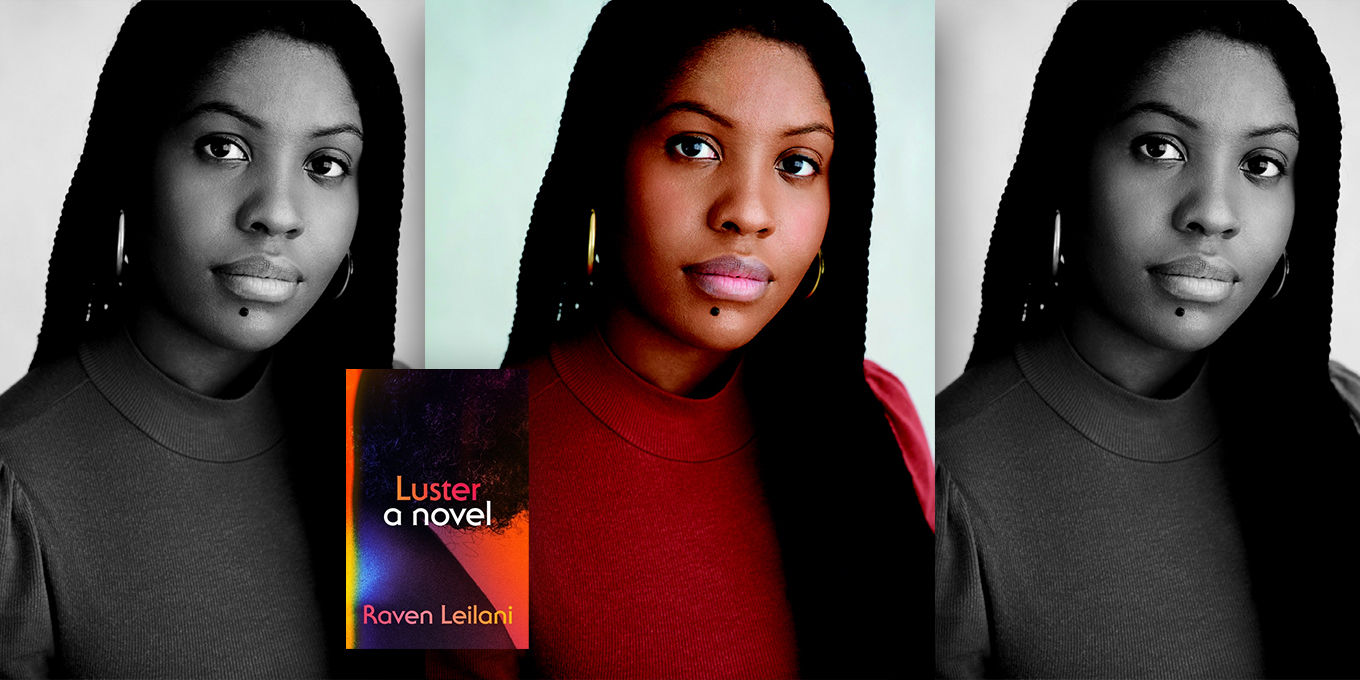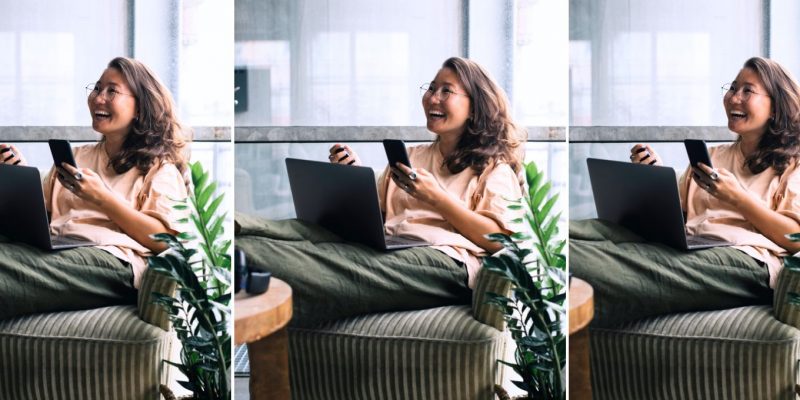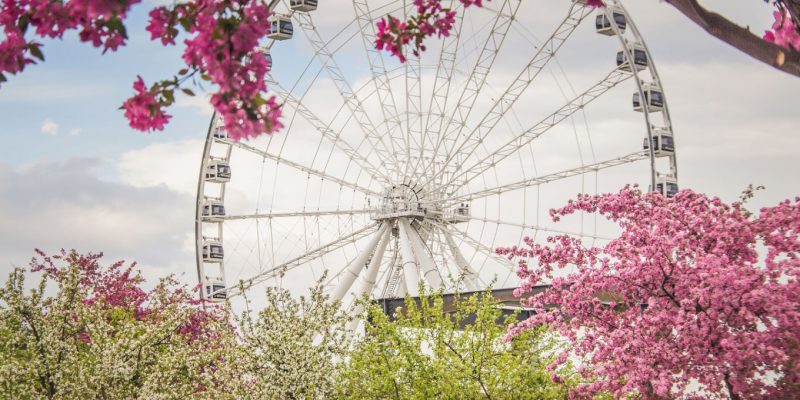Culture
You Need To Read Raven Leilani's 'Luster'
The author discusses her debut novel, one of summer's buzziest releases.
by : Hannah Ziegler- Aug 26th, 2020

In Luster, 30-year-old Raven Leilani’s buzzy debut novel, you set foot into the world of Edie: a Black, 20-something publishing coordinator and unestablished painter with some skeletons in her closet, vermin in her overpriced New York City apartment and a thing for an older white man in an open marriage named Eric. As you might expect, things get messy and heartbreaking and hilarious. Since its August 4th release, Luster has made its way to the New York Times’ Bestseller List and made a splash on social media, with readers remarking on the author’s use of humour and her characters’ humanity.
“It feels strange and almost inappropriate to be promoting the book right now,” Leilani told us of releasing her debut novel during the pandemic. “But I am really heartened that people do seem to be rallying around books and still finding ones that they love and resonate with them.” We reached Leilani via phone in her Brooklyn apartment to discuss when she realized she was a writer, the connections between visual and literary art and why Mister Rogers and disco music make a few appearances in Luster.
Tell me about your writing journey – I know you completed an MFA and have written for several publications, so how did writing a novel come to fruition?
I started with a real infatuation with poetry, because I feel like it is a form that has a real discipline, is about discovery, is about language. Then I moved into short fiction – I just wanted a little more space to play around with telling and building a story. For a while, honestly for most of my writing life, it was mostly focused on short fiction. After my nine-to-five hours, I was carving out time to write and I would submit these short stories to literary journals that I loved. I was submitting furiously, for a long time, like four or five years before I started trying my hand at a longer novel-length work. I’d say that part of the reason why maybe it took so long was I felt that the novel form was a bit daunting – to be able to maintain a story and sustain my interest for that amount of time and also to hopefully create something that would sustain a reader’s attention initially felt like a very tall order – and still does. I think when I get to the page, that is one of my first concerns: Do I have enough to make it to the end, to justify it covering however many hundred pages? Before I wrote Luster, I tried my hand at a couple different projects that didn’t pan out, but that I believe were very useful and very integral to me being able to get to the point where I could write Luster.
Towards the end of the novel, Edie declares out loud that she is an artist. Was there a defining moment that you self-identified as a writer?
I had great teachers who always told me that if you want to do this thing, you need to have a steady job in order to have stability, so that you have time to create the thing that will feed you. I was practicing [writing] regularly on the side, even though it wasn’t my main gig. That was where my heart was and those were the hours I was waiting for all day. Being able to say [that you’re a writer] out loud is a very different thing altogether. I remember submitting a bunch of application materials to the MFA program [at New York University] when I was officially trying to make that transition. I was living in D.C. at the time and had been living there for four or five years. I was looking for a community of writers and a place where I would have this permission to write. I started to feel that I was a writer when I made that decision, to kind of uproot my life and dedicate two years to more rigorous studies. Though I want to be careful and say that you don’t then have to attend a program to call yourself a writer. It really is about the practice of it… I just reached the point where I was writing and I no longer wanted it to just be a private thing. Private work is still really meaningful work and in the book, a lot of Edie’s painting is private work. I think a lot of artists really grapple with claiming to be an artist and having your art still be a private practice, but I feel that as long as you’re practicing, you are one.
How has painting informed your writing process?
Painting started very early and it was the first thing I ever wanted to do with my life. I came up against my own limits very early on, in a way where I feel like that’s a formative thing for anybody who’s making anything, whether it’s painting or music or writing: how do I get this thing that is in my mind outside of my body? How do I communicate that effectively? For me with painting, I really had trouble doing that. I think it’s one of the central frustrations for anyone who makes anything – not being able to communicate yourself exactly, with precision. In a lot of short fiction I wrote before this book, the artists in my stories are also struggling with that problem. I write about art because I came from painting, but it was also the first time I ever felt what it was like to have a block and to try and figure out my way around it. I think the art making process is very much that: how do you find your way around… well, around yourself? I think with painting it was more of a formative experience of having a thing that I wanted to express and struggling to express it. It’s also understanding that that feeling is actually integral to making art and that isn’t where you stop. It’s sort of where you begin. Also in general, I love writing about painting. It’s a very tactile activity, I feel like your body is involved in a different way than it is in writing. I gravitate towards paintings that are bodily, that are anatomical, that are portraits. That is something that I am preoccupied with, and I think does show up in my work – the concerns of the body.
Out of curiosity, do you have synesthesia?
I wouldn’t say I do; I haven’t gotten any official record back on that [laughs]. But I will say that I do feel like colour and forms feel inextricable from my personal practice when it comes to writing. It isn’t the kind of subconscious thing that I gravitate toward, but I do think that my preoccupation with colour, with form, with the body especially as it is on the canvas, always creeps into my work.
What colours do you associate Luster with?
I would say cool colours, like purples and blues. There’s one point in the book where Edie is is cleaning her colour palette and she realizes that her palette is dominated by these shades of blue – that was just me almost talking about my own life, like I’m cleaning my palate and and I’m realizing ‘Oh boy, where are the warm colours?’ On the other hand, the way I hoped to write Luster was for it to have an energy, to have speed – and those are bright colours. Those are warm colours, like hot oranges and reds and pink, which I also really love in general. The designer of the U.S. book jacket, Na Kim, really captured the colour palette of the book in that it’s pretty much dominated by those really bright primary colours, like blue, yellow, and magenta. There’s something really vital about those because that’s where all the colours come from. It was important to me in representing a Black woman on the page to allow… these things that are often sublimated, because she is a Black woman in a world that demands performance. So much of what we’re seeing in her interior are the things that are unexpressed, so when I think of what is held inside for survival, those are darker colours.
How did you develop the story of Luster?
I had slowly been making my way towards this through my short fiction. With Luster, when I knew it was going to be a book, I suddenly had the space to tell a more developed story around what I had been trying to say about art, perhaps for years. I knew that I wanted to write about an artist, a young Black woman who is trying to lay claim to her artistry. That initially opened up the book in a way where I knew that in talking about it, I would want to explore failure more than anything else. I would want to explore the journey of an artist, when that journey is informed by an environment that is brutal; brutal in the way that there is a Black woman who is trying to lay claim to her art and so there are natural and socioeconomic impediments to her being able to grasp that. I had felt that in my own life. I had experienced the challenge of juggling both the demands of living and the demands of trying to make art on the side – in fact, I was going through that while I was writing this book. Any stories about art resonate with me generally, but the stories that I think really get to you are the stories for you. You sit behind the scenes with the artists and you watch them create in that private space. You watch them grapple with those personal and environmental barriers, so I knew that was going to be a big part of the book, but I also desperately needed to write a woman who is full of desire and yearning openly. It was important to me that Edie not be cool. That led me to the arc, around how Edie, not just as an artist, needs to make something and to feel witnessed. She has a need to feel affirmed in her humanity – those carnal, emotional needs. It was important for me to write about a Black woman who is wanting and making no apology around it.
You zoom in and out of a wide variety of pop cultural phenomena – how did you decide which references to include? Mister Rogers makes a few appearances.
That’s kind of just me loving Mister Rogers, or me on my fifth Seinfeld binge… They are all really personal references and [tap into] what it feels like to post a joke on Twitter that no one likes [laughs]… they come from me being a fan. Before I was anything, I feel like I was a fan, so that is the way I engage with writing. That’s the way I engage with anything I love. The things I love found their way into the book, like comics and anime and video games. The other day, someone reached out to me [about] a little reference that I had buried in the book about an anime that I really love. There’s something really cool about leaving things in there for your people – and I have a lot of different people. I used to work in scientific journalism, so scientists have written to me about the book. Professionally, I am a geek in a way.
That fandom kind of bleeds into Edie’s obsession with Eric.
Yeah, I mean even though you’re privy to her thoughts and the way she is curating herself in these interactions with him and anxious about the image that she’s projecting, you understand her investment. She’s not a disaffected millennial who is too removed to care, she’s a person who cares a lot, in a way that it paralyzes her. I wanted to write about when you’re first getting to know someone romantically and the way that it’s overwhelming – revealing yourself to another person is overwhelming. Edie gradually has a come-to-Jesus moment, about what the relationship is at the beginning. That’s a moment where the possibility of a person comes up against the flesh of the person. Since Edie and Eric met online, it allowed them to at once create the image they would like to be seen as but also be more candid with that barrier between them. Edie’s infatuation with Eric is one that is born of that excitement, of having let the mask slip a little bit. Also, she wants to be touched. She has a body and I wanted the reader to feel that; I wanted them to be in that body and understand the way it is yearning.
That reminds me of a line in the book, where Edie narrates, “Maybe I can’t pretend to be aloof to men that are aloof to me.” Disco is one of the few shared interests for Edie and Eric, and as a genre it is pretty much the opposite of aloof. Why did you choose disco to bridge them together?
Disco is something that is Black and clear and beautiful. I think it used to be talked about snidely at times because of the space it inhabits as a genre. It’s overt and joyful and fun. In this meeting between two people who have very few things in common and are both, to an extent, preoccupied with those differences, disco is an earnest shared experience that they both can be involved in. For Edie, it’s joy. It’s joy for a Black woman who, for a lot of the book, is trying to live and is really struggling to survive. It was important to me that in a book that is depicting a young Black woman who is trying to pursue her art and often encounters detours, that she actually has something that she just sort of unabashedly enjoys.
Since the book is quite visual and descriptive, have you thought about adapting it for the stage or screen?
Yeah I would love to. That’s about all I can say about that right now.
READ MORE:
I Read ‘Midnight Sun’ So You Don’t Have To
Newsletter
Join our mailing list for the latest and biggest in fashion trends, beauty, culture and celebrity.
Read Next

Fashion
H&M's Latest Designer Collab With Rokh Just Dropped (And It's So Good)
We chatted with the emerging designer about the collaboration, his favourite pieces and more.
by : Melissa Fejtek- Apr 18th, 2024

Culture
5 Toronto Restaurants to Celebrate Mother’s Day
Treat your mom right with a meal at any of these amazing restaurants.
by : Rebecca Gao- Apr 18th, 2024

Culture
This University Elevates Women to New Professional Heights
You shouldn’t have to pause your life to move forward in your career.
by : ELLE Canada- Apr 16th, 2024




